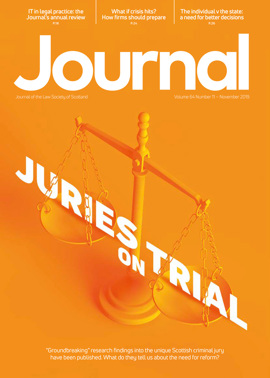A crisis in the unmaking

A crisis is different to, and in, every organisation. From defamation to a terror attack, from mergers gone wrong, or redundancies, to a fatality. It’s how you handle it that can make or break the organisation.
Who determines a brand’s reputation? You may think it’s the PR and marketing department, or the board, but actually it’s anyone who comes into contact with the organisation as they form an opinion and perceptions are created. These are stakeholders and can include media, clients, staff and suppliers, to name a few.
A strong, positive reputation translates into long-term value, represented by trust. Reputation is one of the most, if not the most, important asset an organisation has. This is why, when a crisis hits, there has to be a strategy in place, agreed and tested, to ensure that managing reputation through effective communication during a crisis is swift and effective.
What is public relations?
Public relations is defined by the Chartered Institute of Public Relations in this way: “Public relations is about reputation – the result of what you do, what you say and what others say about you.
“Public relations is the discipline which looks after reputation, with the aim of earning understanding and support and influencing opinion and behaviour. It is the planned and sustained effort to establish and maintain goodwill and mutual understanding between an organisation and its publics.”
High tech = high risk
With technology advancements and social media, the concern of cyber-attacks and now looking to the ethics of storing and using AI and data, we have never been more at risk of a crisis hitting. Look at Facebook and the use of data – that led to a loss of users and decline in trust. Look at the NHS cyber-attack when patient records were held to ransom – this affected patient lives.
Tech and social media also present a challenge in a crisis. Staff and members of the public can now film something with the swipe of a screen and share online with no context – “going live” on social channels, bringing their followers in on what’s happening. You cannot control that.
Identifying risks
One of the first things a chartered public relations professional will do when advising an organisation is develop a risk register which is all-encompassing.
PR pros will look at the entire organisation and assess what is a potential risk to reputation and what might be an issue or a crisis threat. This is tailored to every organisation and will be assessed as low, moderate or high risk.
A low to moderate risk issue should be managed quickly and effectively, to make sure it doesn’t escalate and have the potential to become a crisis.
Understanding stakeholders
Stakeholder mapping is a really important part of public relations and is one of the first activities undertaken to understand an organisation and its audiences better. These audiences can be listed and then categorised in three ways, according to the salience model: Power, Legitimacy and Urgency.
Understanding stakeholders is essential for any business, and good business practice will include ongoing stakeholder engagement in a public relations strategy. Some stakeholders may have a specific role to play in a crisis, either internally or externally, and a process should be in place to ensure a coordinated approach with the wider plan. For example, the media should be alerted to any communication after the board, the general workforce should be engaged after the management team, and so on. The crisis PR plan will include a cascade of who should know what and when.
Equally, each stakeholder group will require a different level of information, presented in a different way. For example, staff will often be able to access the intranet for information, boards now operate on WhatsApp for immediate decision-making, and the media receive emails with text and supporting content, e.g. a video.
PR on the front line
Public relations professionals are often thought of as media relations officers, writing and distributing press releases, answering enquiries etc. This is not representative of modern public relations, although PR may include media relations as part of a strategy.
As a strategic function within an organisation, PR pros now work with data to inform strategy, consider social impact, influence decision-making and add value to an organisation’s purpose, team and long-term plan by using an integrated and return-driven model. This includes paying to guarantee reaching audiences, creating to engage and convert, and of course building two-way relationships for long-term loyalty.
There is often a disconnect between departments and functions within organisations, and there is frequently a lack of integration, which will have an impact on any issue or crisis situation. Working in silos doesn’t work. Public relations is one of the only functions within an organisation which has to have a 360 degree view, in this case to assess risk, help address an issue, plan for a crisis and work with colleagues across every department to ensure a coordinated approach.
The cost of impact of a crisis should speak to everyone – market value, loss of customers and staff, lack of trust, loss of supply chain, business growth setbacks. But this impact can be reduced should there be a strategy in place which identifies the risk, impact and how it will be managed.
Assessing the risks and potential crises is one thing, but what potential risks do these crises carry and how would they impact? It’s cause and effect. We look to do the same with the services provided by an organisation and its personnel – it means being fully aware of any skeletons in the closet. These are often the most critical and not only damage company reputation: it gets personal, too.
A crisis war room
Once all the research is done, a strategy is developed for overall crisis management, which is developed by the heads of operation, security and PR/communication, and signed off by the board.
Roles are delegated, and the war room, where the crisis management team will operate from, will be planned in advance. (There is often more than one war room planned in the event of a crisis, as the original site may be dangerous, or having the location further away may be better for management.)
The PR and communication team will already have contact lists, templates and tools approved, in case of a crisis; this allows for a quick response and action to be taken. A physical kit will be available in addition to anything stored online.
The PR and communication team will also need to work closely with the emergency services and their PR and communication teams, plus any other stakeholder PR teams, ensuring that their requirements are fulfilled.
Collaborative working
Communication in a crisis isn’t just external – it’s internal too. The crisis management team will be working together, but your PR pro will be leading on how things are communicated, documented and stored. In times of severe crisis, there may be no phone signal or internet, and therefore face-to-face communication or travelling to a new war room will be required.
Working in advance with departments like IT and HR is essential. Each specialism will play its part and help inform the overall plan, but if anything is being communicated to anyone, internally or externally, it should be coordinated through the public relations/communication team.
This ensures the right stakeholders are involved at the right time, with the correct information (fact checked), and the right communication at the right time, on the right channel.
Wider than the here and now
In a crisis, our language and tone should be relevant to the situation and people involved. It must be in line with the PR and communication strategy and free from jargon.
Let’s not forget that a crisis also goes wider than the immediate people affected. There are families and friends to consider, whether it’s due to job loss or fatality. An inclusive crisis PR and communication plan will consider the wider audiences.
It will also consider the future and start to shape the recovery strategy. A crisis doesn’t hit in one day and disappear the next.
Experience and sharp skills are what get you through a crisis, together with persistence and belief in the strategy. An effective consultant or team will research, plan, devise a strategy and steer an organisation through. They also have the opportunity to turn the crisis into a positive situation if they listen and react thoughtfully and timeously.
The call to action is to work with a chartered public relations professional and make sure that if a crisis hits your company, or indeed your client’s, you are ready to bring in experts in how, when and what to communicate. Reputation is everything.







